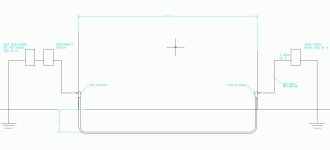DaveNay
Platinum Member
- Joined
- Aug 13, 2003
- Messages
- 834
- Location
- Waterman, DeKalb County, Illinois
- Tractor
- John Deere 855 MFWD; Oliver 1850 Gas
I am adding a small (240V/30A) subpanel to a building adjacent to my workshop. A short length of the feeder will be underground through 1 1/2" PVC. Inside the buildings, I would like to stick with stapling the cable to the studs (for simplicity/cost/time). My question is, how do I make the transition from conduit to plane cable? Does the pipe just end with the wires coming out? Should I put some sort of a junction box with cable clamp (even though I would just run the cable straight through the box) ? I plan on using #8/3 UF cable.
Thanks,
Dave
Thanks,
Dave
